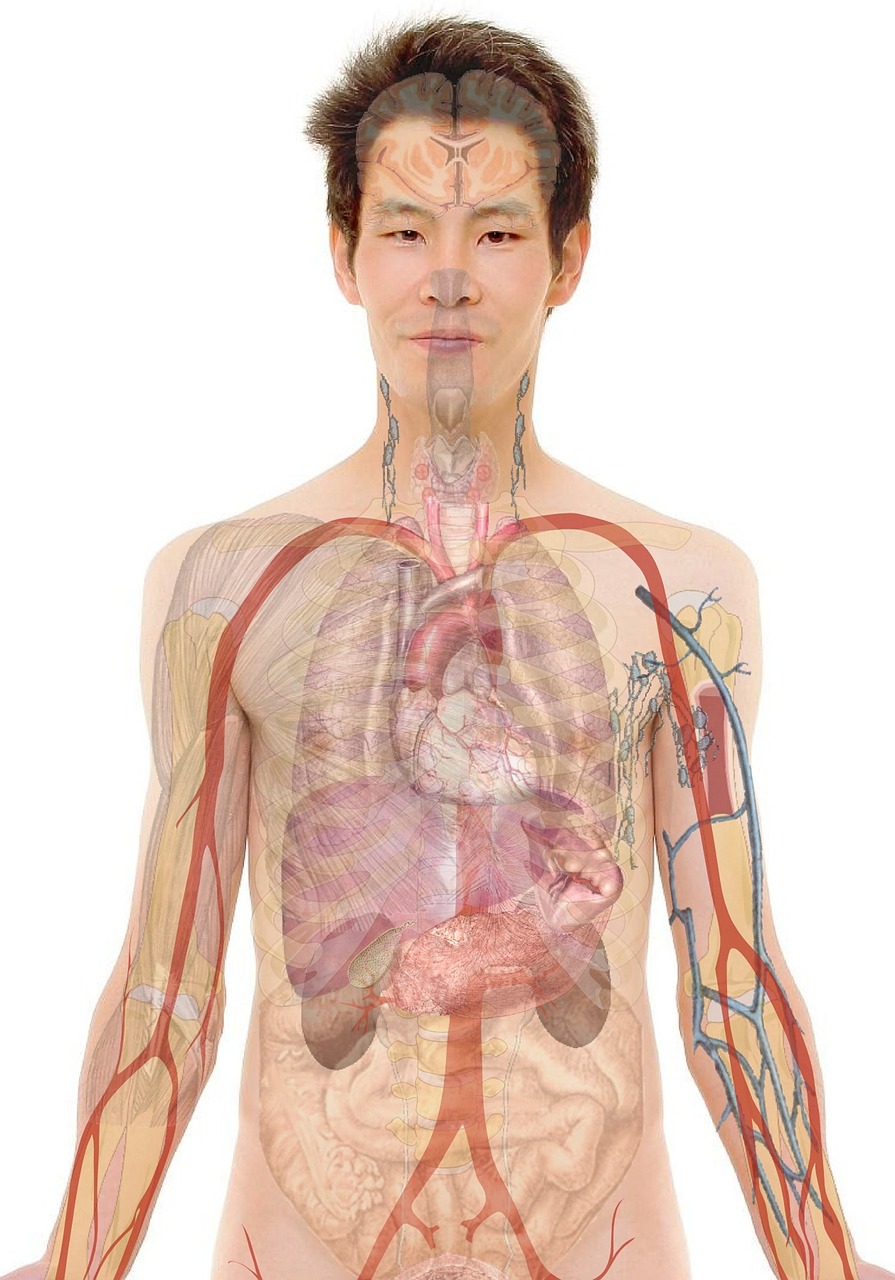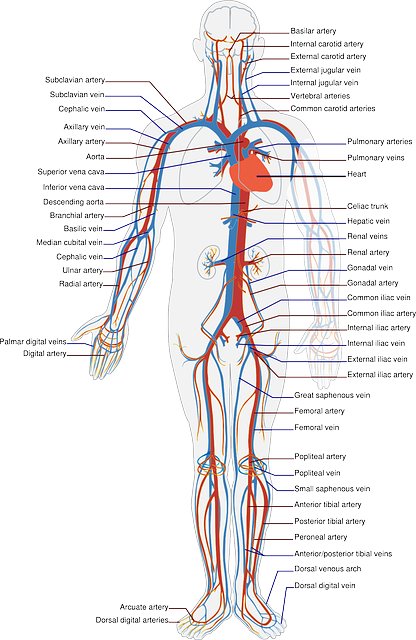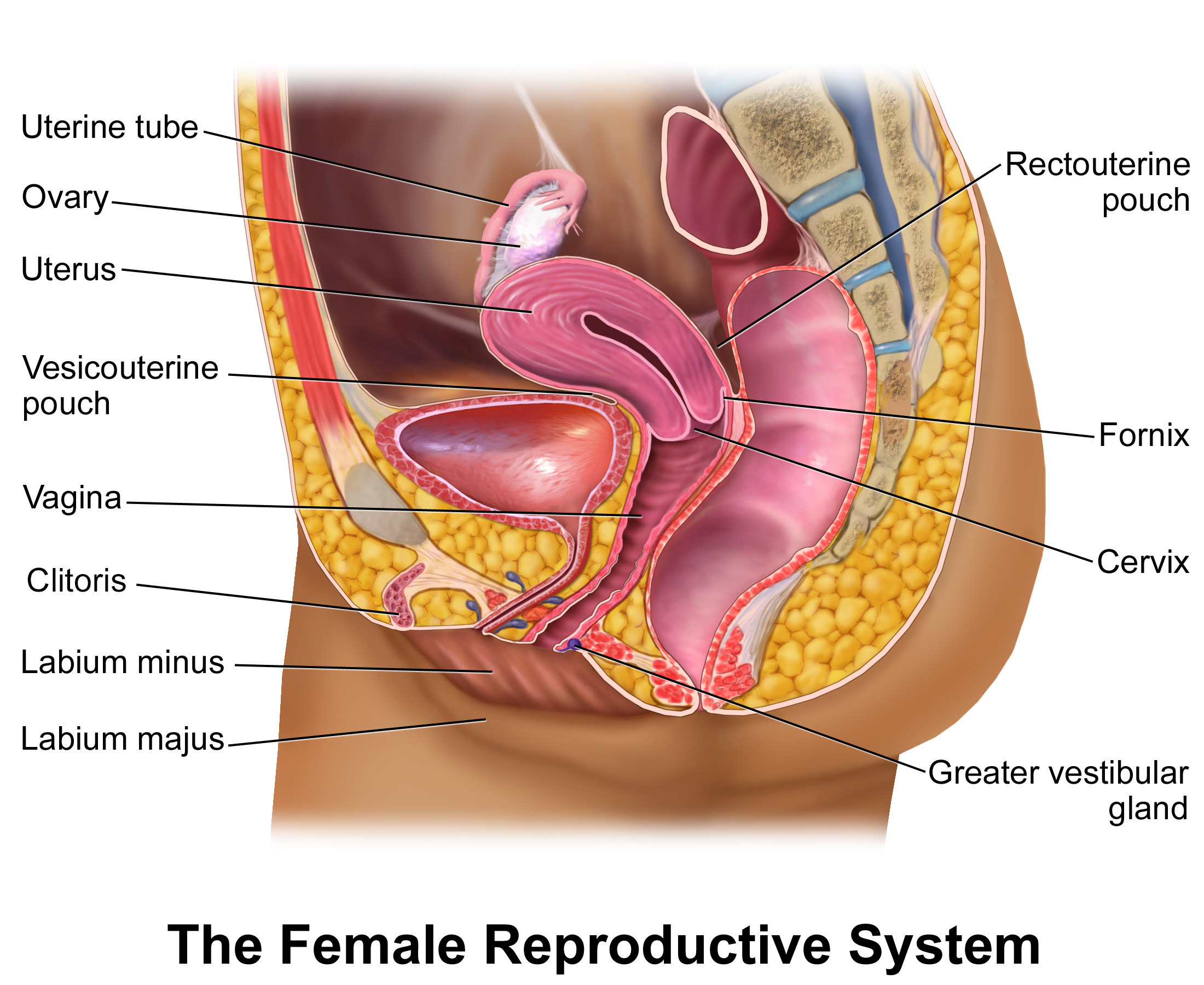The Human Body: Most Important to Know it All in 2025
The human body is indeed a marvellous creation of the Creator of the universe. It comprises many parts and vital organs that work together to maintain life and health.
Main Parts and Organs of the Human Body:

- The skeletal system, which provides the framework and support for the body, protects the
 internal organs and enables movement. The skeletal system comprises 206 bones, which are connected by ligaments, tendons, and cartilage. The skeletal system also produces blood cells in the bone marrow and stores minerals such as calcium and phosphorus1.
internal organs and enables movement. The skeletal system comprises 206 bones, which are connected by ligaments, tendons, and cartilage. The skeletal system also produces blood cells in the bone marrow and stores minerals such as calcium and phosphorus1.  The muscular system comprises about 650 muscles that attach to the bones and allow movement, posture, and facial expressions. The muscular system also helps generate heat and circulate blood throughout the body. Muscles are made of specialized cells that can contract and relax in response to nerve signals1.
The muscular system comprises about 650 muscles that attach to the bones and allow movement, posture, and facial expressions. The muscular system also helps generate heat and circulate blood throughout the body. Muscles are made of specialized cells that can contract and relax in response to nerve signals1.- The integumentary system includes the skin, hair, and nails. The skin is the largest organ of the body, covering about 1.5 to 2 square meters of surface area. The skin protects the body from external factors such as infections, injuries, and ultraviolet rays. The skin also regulates body temperature, eliminates waste through sweat, and senses touch, pain, temperature, and pressure. Hair and nails are made of keratin, a protein that also forms the outer layer of the skin1.

- The nervous system consists of the brain, spinal cord, and nerves. The nervous system is the
 control centre of the body, coordinating and regulating all the functions of the other systems. The brain is the most complex organ of the body, responsible for processing information, memory, learning, emotions, and behaviour.
control centre of the body, coordinating and regulating all the functions of the other systems. The brain is the most complex organ of the body, responsible for processing information, memory, learning, emotions, and behaviour. - The spinal cord connects the brain with the rest of the body, transmitting nerve impulses to and from the muscles and organs. The nerves are the communication network of the body, carrying signals between the brain, spinal cord, and the sensory receptors and effectors2.
- The cardiovascular system, which includes the heart, blood vessels, and blood. The cardiovascular system transports oxygen, nutrients, hormones, and waste products throughout the body. The heart is a muscular pump that beats about 100,000 times a day, pumping about 5 litres of blood per minute.
- The blood vessels are the tubes that carry blood to and from the heart and the tissues. The blood is the fluid that carries the cells and substances that are essential for life. The blood consists of plasma, red blood cells, white blood cells, and platelets2.

- The respiratory system: This system of the human body consists of the nose, mouth, pharynx, larynx, trachea, bronchi, bronchioles, and alveoli. The respiratory system enables gas exchange between the body and the environment, bringing in oxygen and removing carbon dioxide.
- The nose and mouth are the entry points for air, which is moistened, warmed, and filtered by the nasal cavity and the pharynx. The larynx is the voice box, where sound is produced by the vibration of the vocal cords. The trachea is the windpipe, which divides into two branches called the bronchi, which further divide into smaller tubes called the bronchioles. The alveoli are the tiny air sacs at the end of the bronchioles, where oxygen and carbon dioxide diffuse across the thin walls into and out of the blood2.
- The digestive system, which consists of the mouth, oesophagus, stomach, small intestine, large intestine, rectum, anus, liver, gallbladder, and pancreas in the human body. The digestive system breaks down food into smaller molecules that can be absorbed and used by the body. The mouth is where food is chewed and mixed with saliva, which contains enzymes that start the digestion of
 carbohydrates. The oesophagus is the tube that carries food from the mouth to the stomach, where food is further broken down by acid and enzymes.
carbohydrates. The oesophagus is the tube that carries food from the mouth to the stomach, where food is further broken down by acid and enzymes. - The small intestine is the longest part of the digestive tract, where most of the nutrients are absorbed by the villi, which are finger-like projections that increase the surface area. The large intestine is where water and some minerals are reabsorbed, and where bacteria help produce vitamins and break down fiber. The rectum and anus are the final parts of the digestive system, where faeces are stored and eliminated. The liver, gallbladder, and pancreas are accessory organs that produce and secrete substances that aid digestion. The liver produces bile, which helps emulsify fats. The gallbladder stores and releases bile into the small intestine. The pancreas produces pancreatic juice, which contains enzymes that digest carbohydrates, proteins, and fats2.
- The urinary system: consists of the kidneys, ureters, bladder, and urethra in the human body. The urinary system filters the blood and removes waste products and excess water as urine. The kidneys are the main organs of the urinary system, where blood is filtered by millions of nephrons, which are the functional units of the kidneys. The ureters are the tubes that carry urine from the kidneys to the bladder, which is the muscular sac that stores urine. The urethra is the tube that carries urine from the bladder to the outside of the body2.
- The endocrine system: It consists of glands in the human body that produce and secrete hormones that regulate various functions of the body. The endocrine system works closely with the nervous system to

human endocrine system maintain homeostasis, which is the state of balance and stability in the body. Some of the major glands of the endocrine system are the pituitary gland, the thyroid gland, the parathyroid glands, the adrenal glands, the pancreas, the ovaries, and the testes. The pituitary gland is the master gland of the endocrine system, which controls the activity of the other glands.
- The thyroid gland regulates the metabolism, growth, and development of the body. The parathyroid glands regulate the calcium and phosphate levels in the blood and bones. The adrenal glands produce hormones that help the body cope with stress, such as adrenaline and cortisol. The pancreas produces insulin and glucagon, which regulate the blood glucose levels. The ovaries and the testes produce sex hormones, such as estrogen and testosterone, which control reproductive functions2.
- The reproductive system: The human body consists of the organs and structures that enable sexual reproduction and the production of offspring. The reproductive system differs between males and females. The male reproductive system includes the penis, the scrotum, the testes, the epididymis, the vas
 deferens, the seminal ve
deferens, the seminal ve sicles, the prostate gland, and the urethra. The penis is the external organ that delivers sperm into the female reproductive tract. The scrotum is the sac that holds the testes, which produce sperm and testosterone. The epididymis is the coiled tube that stores and transports sperm from the testes to the vas deferens, which is the duct that carries sperm to the ejaculatory duct. The seminal vesicles and the prostate gland produce seminal fluid, which nourishes and protects the sperm. The urethra is the tube that carries urine and semen out of the body. The female reproductive system includes the vulva, the vagina, the cervix, the uterus, the fallopian tubes, and the ovaries. The vulva is the external part of the female genitalia, which includes the labia, the clitoris, and the opening of the vagina. The vagina is the muscular canal that receives the penis during sexual intercourse and serves as the birth canal during childbirth. The cervix is the lower part of the uterus, which connects the vagina and the uterus. The uterus is the pear-shaped organ that houses and nourishes the developing fetus. The fallopian tubes are the tubes that carry the eggs from the ovaries to the uterus. The ovaries are the organs that produce eggs estrogen and progesterone2.
sicles, the prostate gland, and the urethra. The penis is the external organ that delivers sperm into the female reproductive tract. The scrotum is the sac that holds the testes, which produce sperm and testosterone. The epididymis is the coiled tube that stores and transports sperm from the testes to the vas deferens, which is the duct that carries sperm to the ejaculatory duct. The seminal vesicles and the prostate gland produce seminal fluid, which nourishes and protects the sperm. The urethra is the tube that carries urine and semen out of the body. The female reproductive system includes the vulva, the vagina, the cervix, the uterus, the fallopian tubes, and the ovaries. The vulva is the external part of the female genitalia, which includes the labia, the clitoris, and the opening of the vagina. The vagina is the muscular canal that receives the penis during sexual intercourse and serves as the birth canal during childbirth. The cervix is the lower part of the uterus, which connects the vagina and the uterus. The uterus is the pear-shaped organ that houses and nourishes the developing fetus. The fallopian tubes are the tubes that carry the eggs from the ovaries to the uterus. The ovaries are the organs that produce eggs estrogen and progesterone2.
These are some of the main parts and organs of the human body, but there are many more that contribute to the functioning and survival of the human being. The human body is a complex and amazing creation that reflects the wisdom and power of the Creator of the universe.
Some Common Medical Procedures that Involve the Human Body :
- Physical examination: is the process of checking the human body for signs of health or disease. Physical examination may include propaedeutic procedures, such as auscultation (listening to the sounds of the heart, lungs, and other organs), palpation (feeling the organs and tissues with the hands), percussion (tapping the body to produce sounds), and vital signs measurement (such as blood pressure, body temperature, or pulse)1.

- Tests, x-rays, and scans: are diagnostic procedures that use various methods and technologies to obtain images or information about the structure and function of the body. Some examples are blood analysis, urine analysis, biopsy, endoscopy, ultrasound, x-ray, computed tomography (CT), magnetic resonance imaging (MRI), positron emission tomography (PET), and single photon emission computed tomography (SPECT)23.
- Treatments: are therapeutic procedures that aim to repair the effects of injury, disease, or malfunctions, or to improve the quality of life of the patient. Treatments may include medicines, physical and radiation therapies, surgery, or transplantation. Some examples are antibiotics, chemotherapy, radiotherapy, dialysis, pacemaker, stent, angioplasty, bypass surgery, appendectomy, cholecystectomy, cesarean section, and organ transplant43.
Maintaining a Healthy Lifestyle is a Worthwhile Goal that can Improve Your Physical and Mental well-being. There are many aspects of a Healthy Lifestyle, But Some of the Most Important Ones are:
- Eating a balanced diet that includes a variety of whole foods, such as fruits, vegetables, legumes, nuts, seeds, whole grains, lean proteins, and healthy fats. A balanced diet can provide your body with the nutrients it needs to function properly and prevent chronic diseases. You should also limit your intake of salt, sugar, and harmful fats, as they can increase your risk of high blood pressure, diabetes, obesity, and heart disease12.
- Being physically active for at least 150 minutes per week, or 22 minutes per day, of moderate-intensity aerobic exercise, such as brisk walking, cycling, or swimming. You can also do some strength training exercises, such as lifting weights, at least twice a week to build and maintain your muscle mass and bone density. Physical activity can improve your heart health, brain health, mood, weight management, and overall fitness13.
- Managing your stress levels and practising mindfulness, which is the awareness of your thoughts, feelings, and sensations in the present moment. Stress can have negative effects on your health, such as increasing your blood pressure, weakening your immune system, and impairing your sleep quality. Mindfulness can help you cope with stress, reduce anxiety and depression, and enhance your well-being. You can practice mindfulness by doing meditation, yoga, breathing exercises, or other relaxation techniques14.
- Getting enough sleep and rest is essential for your body and mind to recover and rejuvenate. Adults need about seven to nine hours of sleep per night, depending on their individual needs. Lack of sleep can impair your cognitive function, mood, immune system, and metabolism. To improve your sleep quality, you should follow a regular sleep schedule, avoid caffeine, alcohol, and nicotine before bedtime, limit your exposure to blue light from screens, and create a comfortable and dark sleeping environment14.
- Quitting smoking and limiting your alcohol intake, as both can harm your health in various ways. Smoking can damage your lungs, heart, and blood vessels, and increase your risk of cancer and other diseases. Alcohol can affect your liver, brain, and heart, and increase your risk of accidents and injuries. If you smoke, you should seek help to quit as soon as possible. If you drink alcohol, you should do so in moderation, which means no more than one drink per day for women and two drinks per day for men12.
- Nurturing your social connections and relationships can provide you with emotional support, companionship, and a sense of belonging. Social isolation and loneliness can negatively affect your mental health and increase your risk of depression, anxiety, and dementia. You can improve your social well-being by staying in touch with your family and friends, joining a club or a group, volunteering for a cause, or seeking professional help if you need it14.
If you enjoyed this article, please like and share it with your friends. Don’t forget to Share your personal experience/observations thoughts and valuable suggestions for the education /benefit of others. Do subscribe to remain onboard and get more great content!
The Beauty of Creation by ALLAH ALMIGHTY: Unlock the Reality in 2024
Human Creation: Fascinating Quranic Facts Revealed Over 1400 Years Ago
